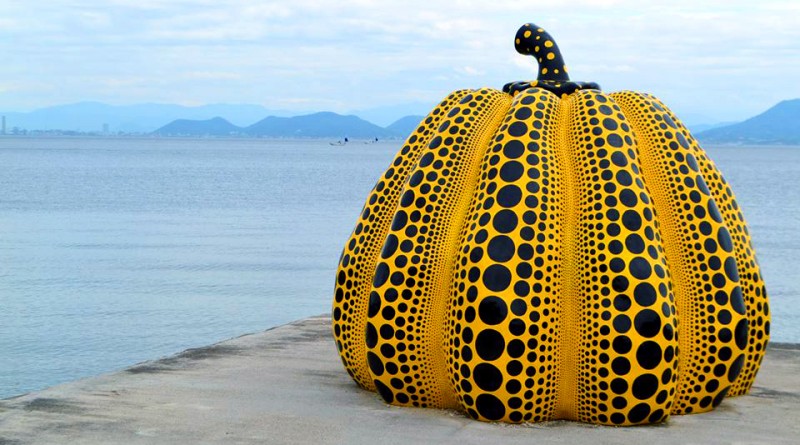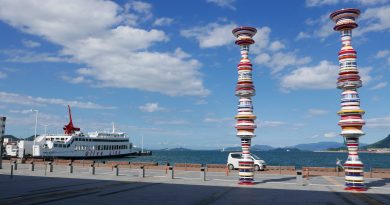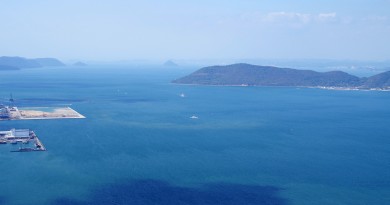Naoshima – The Art Island
You like art? You will love Naoshima
Takamatsu is a port town and with this come several benefits. One of them is the vicinity to the Seto Inland Sea and the islands located in it. The medium sized islands with moderate climate are a top priority destination for everyone who visits western Japan.
Among the islands that can be visited from Takamatsu, Naoshima is said to be most special one. Why? See for yourself.
Beautiful landscape coupled with modern art
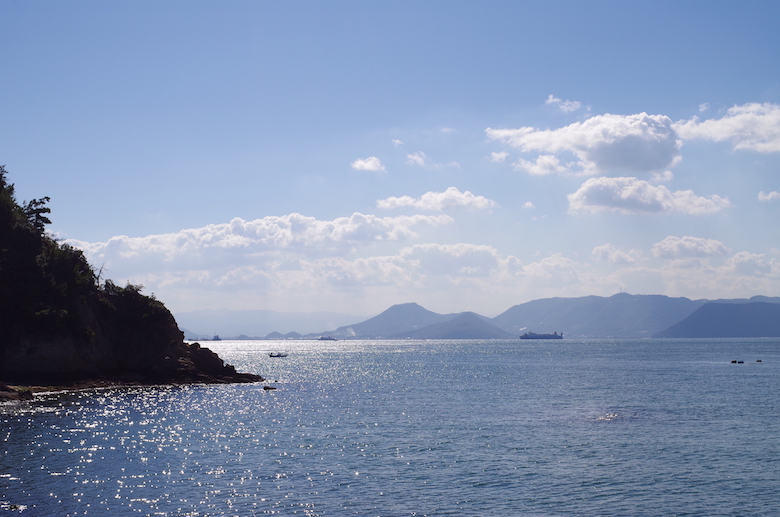 There is no place on the coast of Naoshima that does not offer a breathtaking view of the Seto Inland Sea and the neighboring islands.
There is no place on the coast of Naoshima that does not offer a breathtaking view of the Seto Inland Sea and the neighboring islands.
Feel the cool sea breeze while enjoying the scenery.
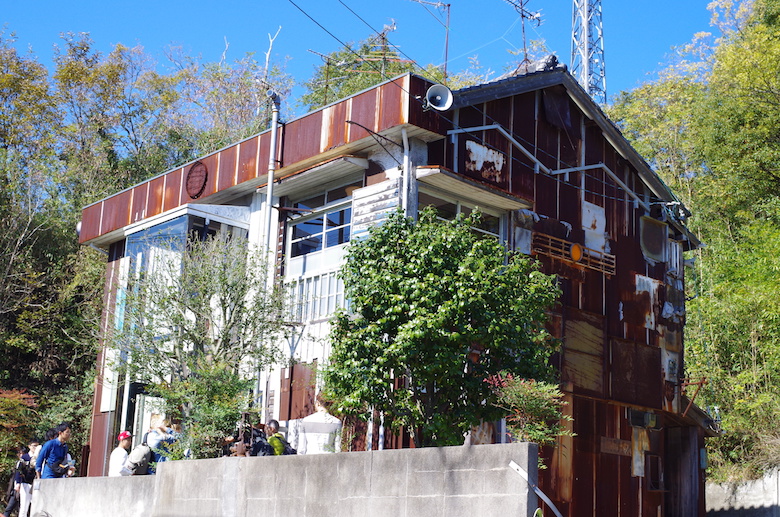 But this kind of thing is what makes Naoshima a definite must go to attraction.
But this kind of thing is what makes Naoshima a definite must go to attraction.
It looks like an old rusty house here, but if you look closer you will see that it has been modified by an artist inside and outside to make new art out of old living space.
Abandoned buildings all over Honmura town, seven altogether, have been turned into accessible art by different famous artists and are just waiting for you to explore them.
The Art House Project is located in the Honmura area in northern Naoshima.
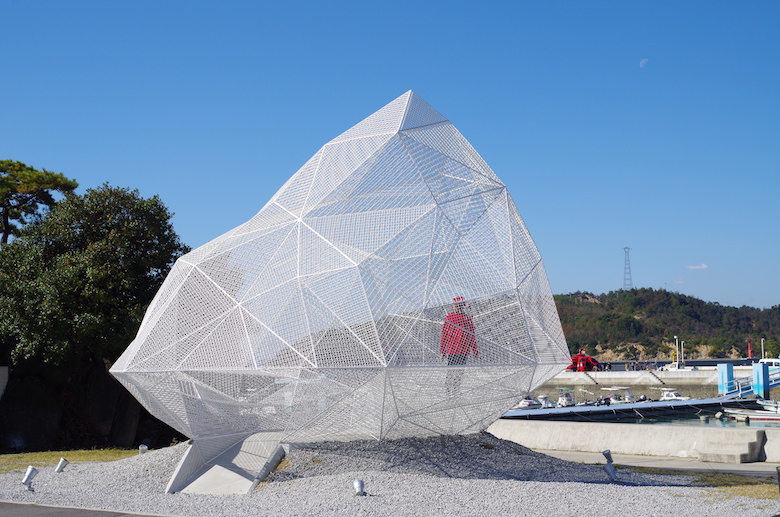 Naoshima is one of the exhibition places of the Setouchi Art Triennale which is held every three years on the port of Takamatsu and the surrounding islands.
Naoshima is one of the exhibition places of the Setouchi Art Triennale which is held every three years on the port of Takamatsu and the surrounding islands.
After the festival ends, most of the art is being left where it was originally exhibitioned.
All over Naoshima and the port of Takamatsu you will find modern art that is blending right into the beautiful scenery. Some of them are even accessible, so don’t be shy, take a look inside and loads of pictures!
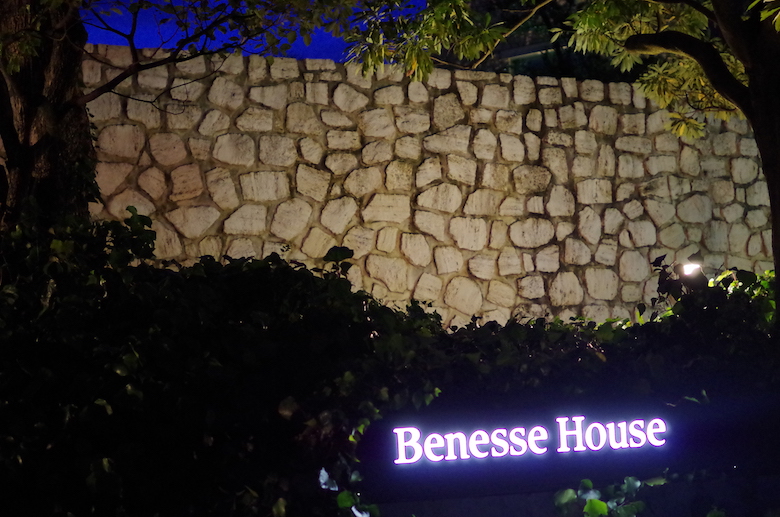 One of the main attractions on Naoshima is the Benesse House, a modern art museum with its own hotel on the southeastern coast of island. All facilities are designed by the star architect Ando Tadao to blend in with nature to not disturb the scenery.
One of the main attractions on Naoshima is the Benesse House, a modern art museum with its own hotel on the southeastern coast of island. All facilities are designed by the star architect Ando Tadao to blend in with nature to not disturb the scenery.
In the same area as the Benesse House in the southeast you can also find the Chichu Art Museum and the Lee Ufan Museum.
All around the Museum area you will find more modern art, just like the famous yellow pumpkin (first picture in our article).
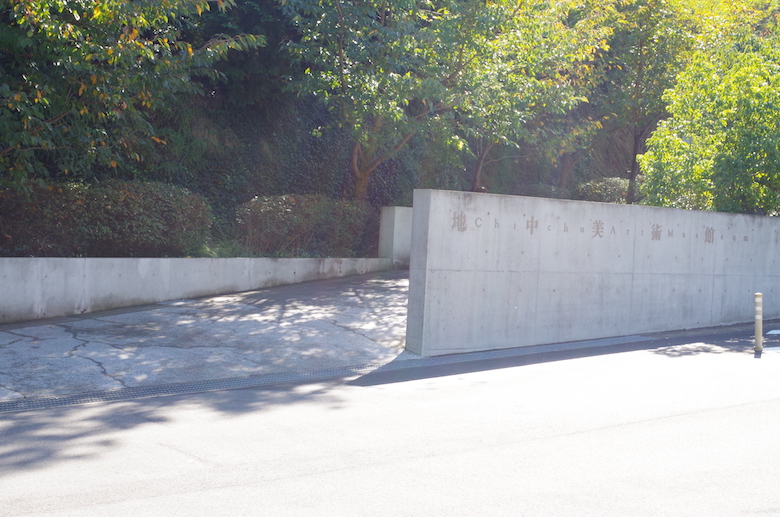 The Chichu Art Museum (literally meaning “art museum in the earth “) is built entirely underground to not affect the beautiful scenery of the Seto Inland Sea.
The Chichu Art Museum (literally meaning “art museum in the earth “) is built entirely underground to not affect the beautiful scenery of the Seto Inland Sea.
There are permanent installations of James Turrell, Walter De Maria as well as paintings of Claude Monet.
The building is part of the ongoing initiative to “rethink the relationship between nature and people”.
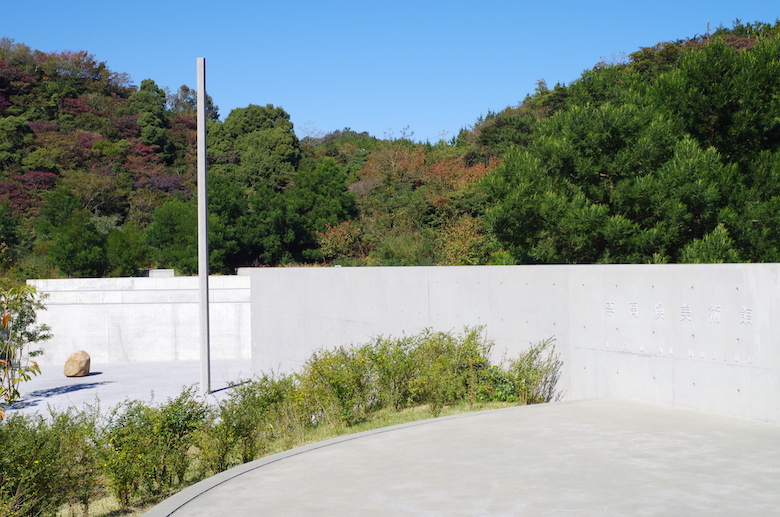 Lee Ufan Museum is dedicated to honoured Korean painter and sculptor Lee Ufan.
Lee Ufan Museum is dedicated to honoured Korean painter and sculptor Lee Ufan.
The museum has also been designed by Ando Tadao and displays large installations made of stone, concrete and iron and paintings in and outside the museum.
How to get around
Bus
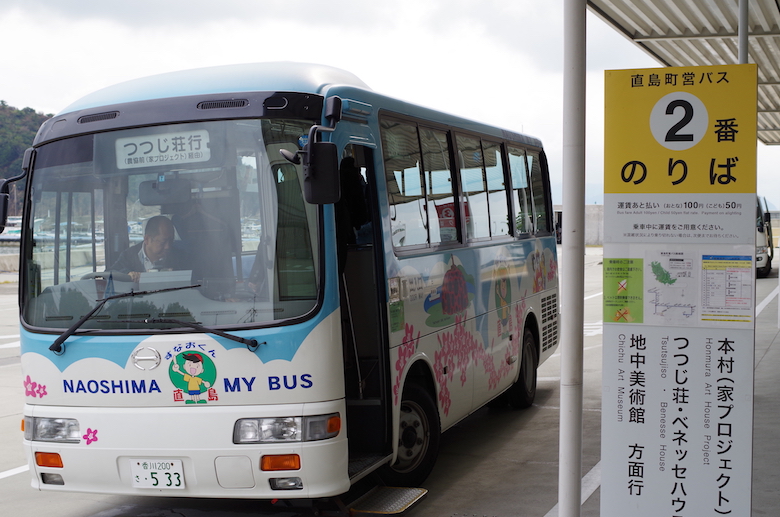 There are frequent busses from the Miyanoura port, the Tsutsuji-so area and the Honmura area.
There are frequent busses from the Miyanoura port, the Tsutsuji-so area and the Honmura area.
If you want to go by bus to the Museum area you have to transfer from the public bus to the free bus service of the Benesse corporation at the Tsutsuji-so stop. Pamphlets that are available at the port offer informations about this.
The fare for the public bus is always 100¥ for adults/ 50¥ for children and you pay by coins as you get off the bus.
Bike
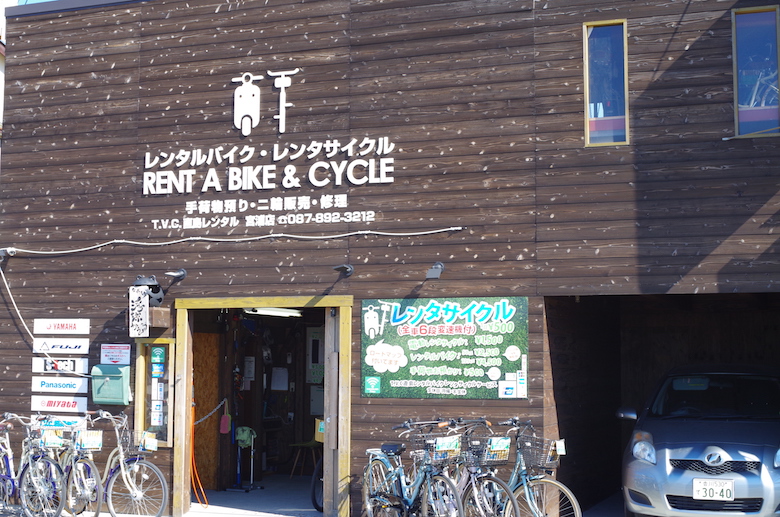 There are several bike rental shops at the Miyanoura area and the Honmura area, with prices as low as 300¥ for one day rental for normal bikes.(The prices of the shop in the picture start from 500¥)
There are several bike rental shops at the Miyanoura area and the Honmura area, with prices as low as 300¥ for one day rental for normal bikes.(The prices of the shop in the picture start from 500¥)
The area between Miyanoura port and the museum area is a bit steep, but you can enjoy the coastal nature of Naoshima at the pace you choose. Just take your time!
If you would like to see more than just a glimpse of the attractions Naoshima has to offer we would suggest that you stay overnight at Naoshima since the last ferry back to Takamatsu is as early as 17:00.
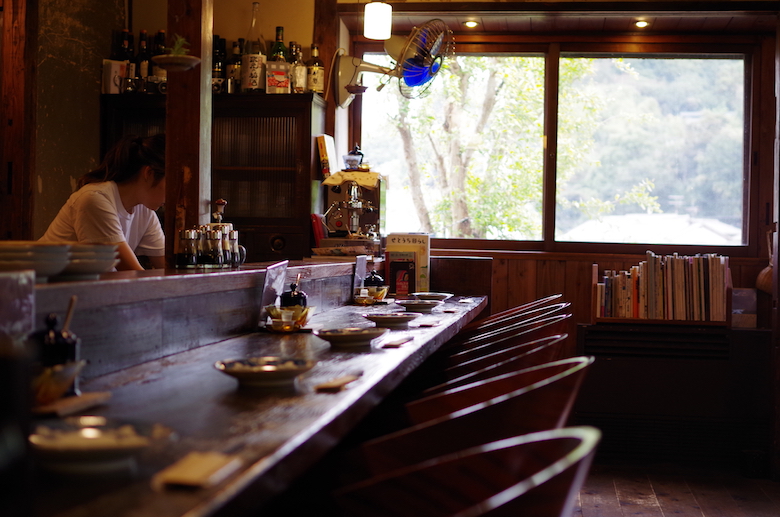 There are plenty of small cafés on Naoshima which offer tasty food for low prices as well as family owned accommodations where you can stay the night!
There are plenty of small cafés on Naoshima which offer tasty food for low prices as well as family owned accommodations where you can stay the night!
Please be aware that on Mondays most shops and attractions on Naoshima are closed.
INFORMATION
Town-Naoshima Tourrism Association
WEB:http://www.naoshima.net/en/index.php

